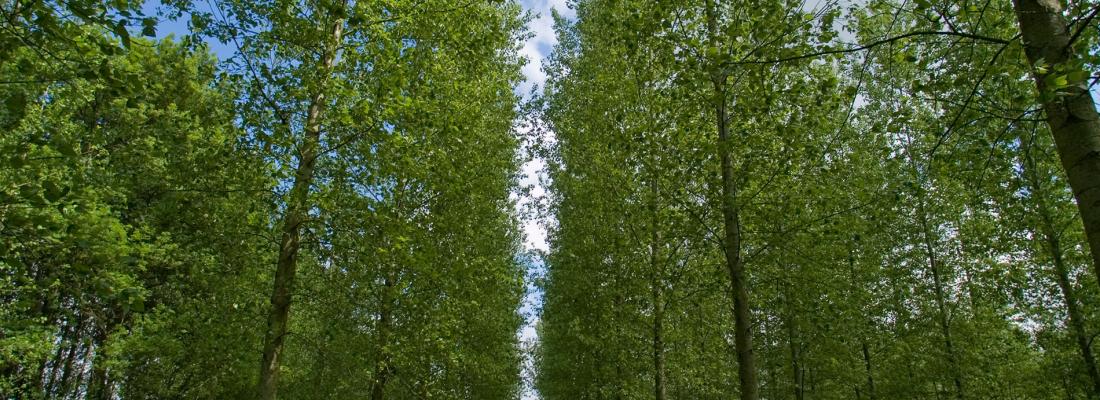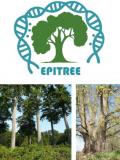Climate change and risks Reading time 3 min
Epigenetics, a new means for improving drought tolerance in trees
Published on 01 July 2021

Droughts and heatwaves weaken trees, particularly in terms of attacks by pest insects and pathogens. Such attacks can result in the trees' death or even dieoff of entire forests. However, certain individual specimens are more drought-tolerant than others. Against a backdrop of climate change, which may greatly increase the occurrence of such episodes, it is crucial to understand the factors that allow trees to adapt, particularly to assist forest managers in the choices they have to make.
While genetic diversity can explain tolerance in part, trees' physiological responses, i.e coordination of gene expression, should also be taken into consideration. That is why researchers focussed on epigenetics, more specifically the biochemical changes in DNA that can modulate gene expression without modifying the DNA sequence - the main marker of which being DNA methylation[1]. Epigenetic modifications particularly occur in response to environmental changes such as drought, and those modifications are sometime long-lasting and possibly heritable.
To better understand epigenetics' role in trees' drought tolerance capacities, a consortium of research teams (INRAE, Universities of Orléans and Oregon, CEA, IRD) looked at the poplar tree, which is susceptible to drought. This species, which serves as a scientific model for tree studies, is also of economic interest since it is the third most widely grown hardwood species in France.
A large-scale experiment: more than 80 trees subjected to drought conditions
For the first time, scientists used poplar lines whose DNA methylation regulation had been modified, for scientific purposes, to gain a better understanding of epigenetic mechanisms in trees. The researchers compared the drought response of modified poplars to that of a wild control line of the same species. Some 81 trees from the modified and wild lines were divided into either groups subjected to drought conditions for three weeks before being watered again or control groups watered on a regular basis. During those three weeks, the researchers monitored various variables to assess the impact of drought as compared to the watered groups, especially growth in height and diameter of the tree trunk. Under drought conditions, the control poplars (wild-type line) showed a significant decrease in growth as compared to the group watered on a regular basis. But no difference was observed in the modified lines, which were, then, more tolerant to moderate drought conditions than the control line was.
Epigenetic modifications target genes for hormonal response to drought
This increased drought tolerance encouraged the researchers to identify the epigenetic and associated genetic changes in the buds that give rise to new branches. They carried out a comparative analysis of overall genome DNA methylation in both the modified and control lines. This analysis revealed significant changes in about 5,000 DNA regions or epimutations under drought conditions. The genes associated with those regions are more specifically involved in the response to environmental constraints, particularly the hormonal response. Epigenetic modifications notably affected two hormonal pathways, i.e. cytokinins and salicylic acid, already known for their effect on plant growth or drought response. The results demonstrate that, unlike genetic mutations which occur randomly as part of species evolution, epigenetic modifications brought about by environmental stress primarily target those genes directly involved in stress response. So DNA methylation contributes to a tree's capacity to adapt to drought conditions.
Activated mobile DNA sequences that induce genetic mutations
But the changes in DNA methylation in the modified lines also affected the activity of mobile genetic elements, or transposable elements. Such DNA sequences, which exist in all living beings, are capable of moving about independently within the genome. Specifically in plants, they can make up more than 50% of their genetic heritage and can cause mutations, particularly in genes.
This study showed that the epigenetic modifications brought about by drought directly activated 89 transposable elements located near genes involved in the response to various types of environmental stress. Two of them were reinserted into the genome, inducing genetic mutations that could be passed onto future generations. Such acquired genetic diversity could affect trees' response to environmental constraints as part of their adaptation to climate change.
By describing the epigenetic mechanisms at work during drought conditions and the resulting genetic mutations, the study has led to a better understanding of the mechanisms trees use to adapt to the effects of climate change. In that way, the study has opened new perspectives for forestry breeders and managers to make forests more resilient.
Trees: an epigenetic mosaic
In trees that live hundreds, if not thousands, of years, each branch has its own genome and epigenome, making the tree a mosaic of genomes and epigenomes from its trunk to its new branches. In fact, the epigenetic changes (epimutations that occur 100,000 times more often than mutations) and genetic mutations that occur in one year are found in the bud that gives rise to a new branch the following year. This study revealed that epimutations come about in response to environmental changes and may themselves induce genetic mutations.
Reference
Mamadou Dia Sow, Anne-Laure Le Gac, Régis Fichot, Sophie Lanciano, Alain Delaunay, Isabelle Le Jan, Marie-Claude Lesage-Descauses, Sylvie Citerne, Jose Caius, Véronique Brunaud, Ludivine Soubigou-Taconnat, Hervé Cochard, Vincent Segura, Cristian Chaparro, Christoph Grunau, Christian Daviaud, Jörg Tost, Franck Brignolas, Steven H. Strauss, Marie Mirouze, Stéphane Maury. (2021) RNAi suppression of DNA methylation affects drought stress response and genome integrity in transgenic poplar. New Phytologist https://doi.org/10.1111/nph.17555

Study carried out as part of the ANR EPITREE project (ANR-17-CE32-0009-01)
This project is designed to study the impact of epigenetics (DNA methylation), gene expression and allelic variation on tree mechanisms for adapting to the local environment and their phenotype plasticity. Two species will be analysed, i.e. the oak and poplar.
The project contributes to the themes related to climate change's impact on ecosystems, particularly forests and trees. It will make it possible to test the value of using epigenetic data from trees for both basic research and managing forests' genetic resources.
[1] DNA methylation: addition of a methyl group (CH3 –) to certain DNA base, which then regulates gene expression.
